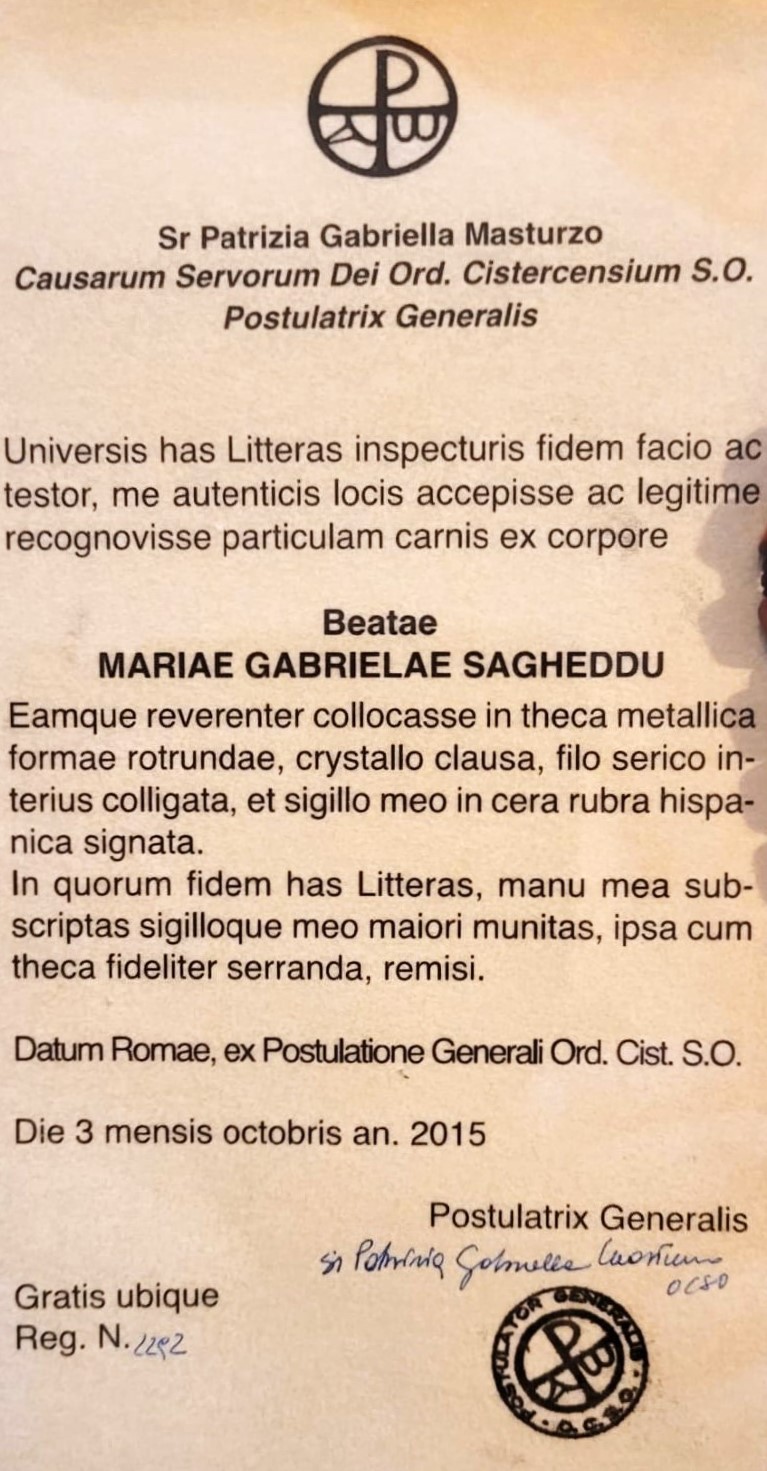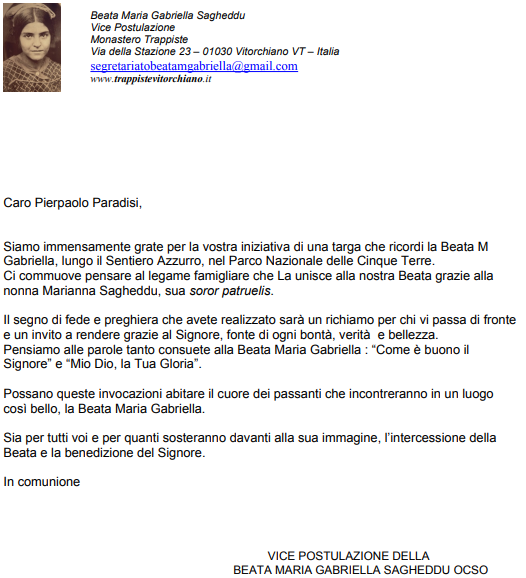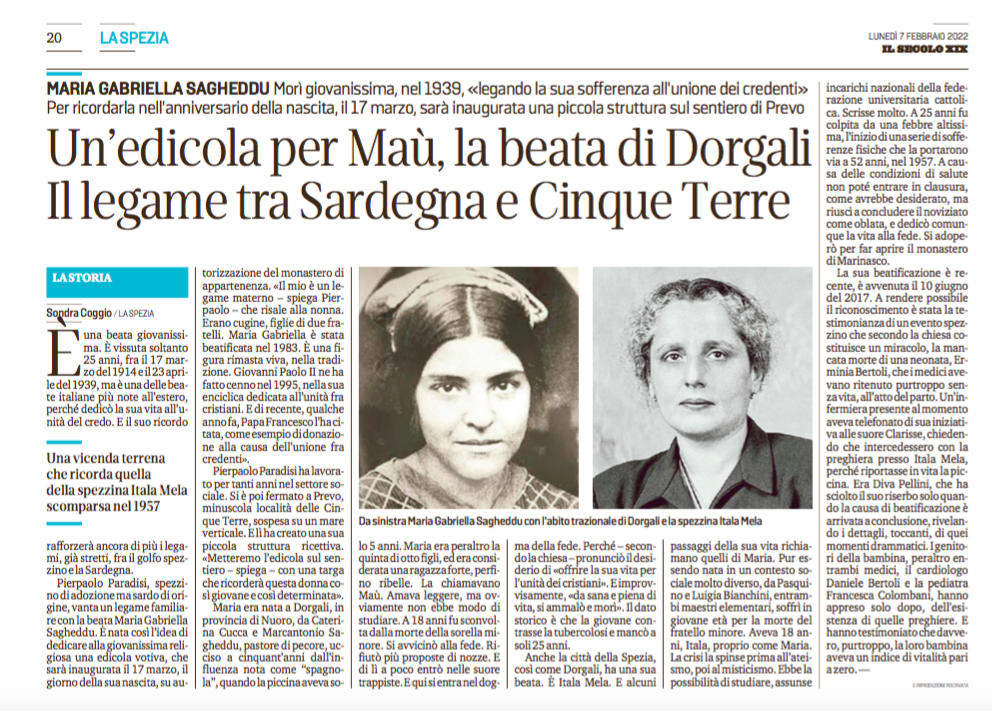Jubilee 2025 in Cinque Terre
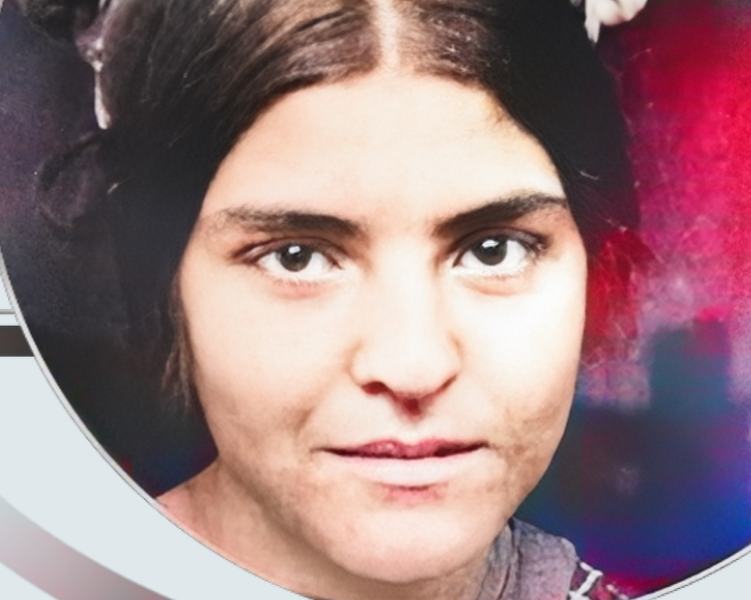
Beata Maria Gabriella Sagheddu
Blessed Maria Gabriella Sagheddu was born in Dorgali, Sardinia, in 1914, into a family of shepherds.
After
having been part of the Catholic Action she joined the Trappists of
Grottaferrata (Rome) where, in 1939, she sacrificed herself for the
Christians unity, at that time in serious crisis.
She has since rest in the Monastery of Vitorchiano (VT).
She
was beatified by Pope John Paul II in 1983 for Christian unity and in
2018 Pope Francis cited her as an example of giving one's life for the
cause of Christian unity in the apostolic exhortation " Gaudete et
Exsultate ".
The
owners of this house, descendants in the maternal line of Maria
Gabriella Sagheddu, have decided to build in her memory a votive shrine in Prevo, in the municipality of Vernazza.
Below a letter of appreciation from the vice postulator of the Trappist Monastery of Vitorchiano (VT), and a formal recognition of the receipt of a relic Ex Corpore of the blessed buried in the votive shrine located in Prevo.
Furthermore, an article from the newspaper Secolo XIX talks about the votive shrine of the Beata Maria Gabriella Sagheddu.
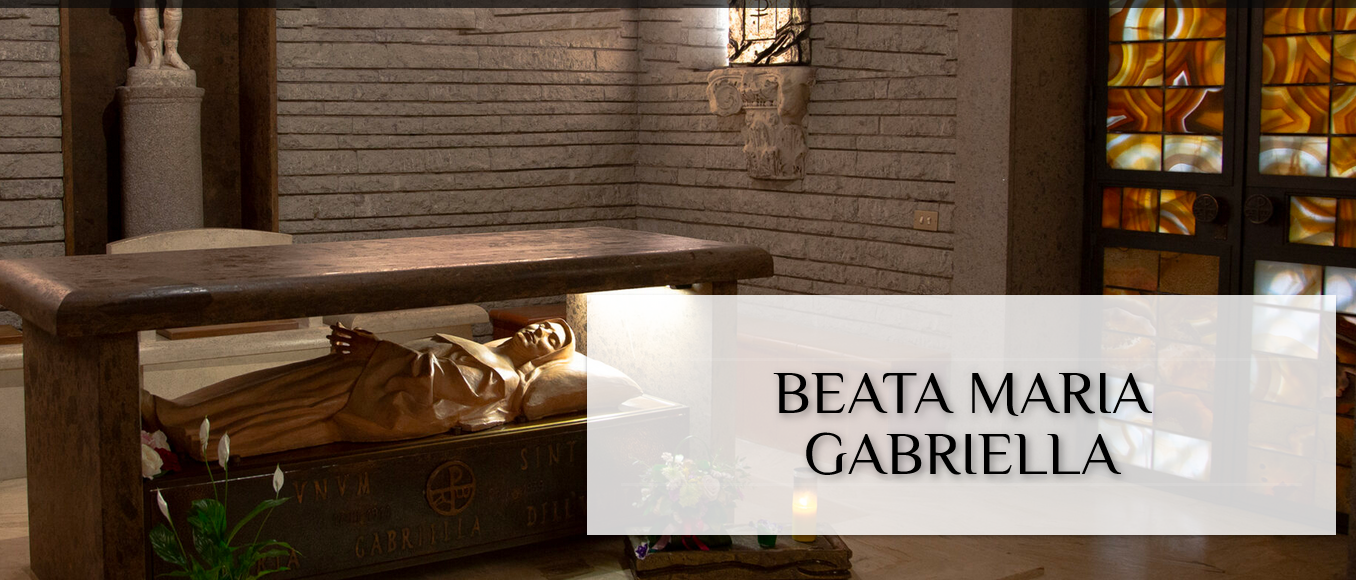
This
experience enriched her spiritual and contemplative practices;
initially, she taught catechism while wielding a stick, but after a
local priest replaced it with a note advising her to "Arm yourself with
patience, not a stick," she embraced this feedback and modified her
approach.
Notably, the Gospel reading for that week included the passage: "There
will be one flock and one shepherd" (John 10:16). Her remains are
preserved in a chapel at a Trappistine convent in Vitorchiano, near
Viterbo, and were found to be incorrupt upon exhumation in 1957.
Maria Gabriella was beatified on 25 January 1983 in the

